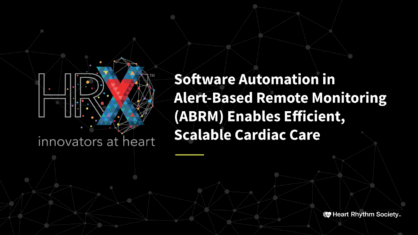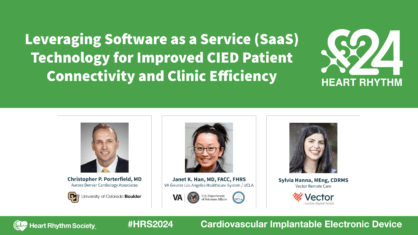Implementing the 2023 Expert Consensus Statement: A Strategic Roadmap for Device Manufacturer Sales Representatives

In the ever-evolving landscape of cardiac device care, keeping pace with guidelines and policies can often seem daunting. To help you navigate this shifting terrain, we’re focusing on the 2023 expert consensus statement by the Heart Rhythm Society, European Heart Rhythm Association, Asia Pacific Heart Rhythm Society, and Latin American Heart Rhythm Society, and its implications for the remote device clinic, particularly the role of device manufacturers in remote monitoring.
Decoding the 2023 Consensus Statement
In an increasingly digital healthcare environment, remote monitoring of cardiac devices has emerged as a linchpin for effective patient care. The consensus statement provides an expert perspective on the practical management of the remote device clinic, with a spotlight on the responsibilities of device manufacturers.
Manufacturer Responsibilities in Remote Monitoring
The consensus statement lists eight level 1 recommendations across three categories specific to how manufacturers should support clinics with remote monitoring. The main aspects of the responsibility include developing reliable, accessible, and secure remote monitoring systems, handling issues swiftly, and maintaining transparent communication with clinics about device recalls, advisories, and service disruptions. Your role is to not just deliver tools but to support clinics in their mission to provide exemplary patient care.
Guidelines Regarding Manufacturer Responsibilities with Remote Monitoring
| Class of Recommendation | Recommendation |
| Manufacturers’ role to optimize individual patient care | |
| 1 | For the care of patients with CIEDs on RM, manufacturers should provide clinic staff with adequate training, education, and technical support to optimize individual patient connectivity. |
| 1 | In patients with CIEDs on RM, the manufacturer should provide an RM system that is reliable, safe, accurate, and meets the needs of the patient. |
| 1 | For the care of patients with CIEDs on RM, manufacturers should include key stakeholders in the design and development of technologies for RM. |
| 1 | For the care of patients with CIEDs on RM, manufacturers should provide prompt notification of disconnection to the clinic, and to the patient to restore connectivity. |
| Manufacturers’ role in the management of patient safety advisories via remote monitoring | |
| 1 | For the care of patients with CIEDs on RM, manufacturers should contact the managing clinics with details of a safety advisory and assist in identifying affected patients both immediately and on a regular basis. |
| 1 | For the care of patients with CIEDs with an advisory and on RM, manufacturers should provide guidance to clinics on optimal alert settings to manage the safety advisory. |
| Support surrounding implantation from manufacturers | |
| 1 | For patients undergoing CIED implantation, it is recommended that manufacturers provide adequate resources, including personnel as appropriate, to ensure enrollment and connectivity to RM platforms before discharge or within 2 weeks of implantation. |
| 1 | For the care of patients undergoing CIED implantation, it is recommended that manufacturer representatives provide the clinic staff with adequate training to properly program remote alerts specific to the clinical indication to minimize inappropriate alerts and need for consequential reprogramming. |
Source: 2023 HRS/EHRA/APHRS/LAHRS expert consensus statement on practical management of the remote device clinic
Turning Guidelines into Actions
In order to meet the expectations your clinics may have following the release of these guidelines, here are some key steps you, as a valued partner to your customers, can take to align with these guidelines:
1. Transparent Communication
The consensus statement stresses the importance of transparency and open communication lines. In your role, it is imperative that you inform clinic staff and patients promptly about any interruptions in remote monitoring services or updates regarding device recalls and advisories related to your companies products.
Actionable Step: Create a proactive communication strategy. Regularly engage with your clinics and keep them updated about any potential disruptions or issues with devices.
2. Ensuring System Functionality
Device manufacturers bear the substantial responsibility of ensuring that remote monitoring systems function across geographic locations, successfully overcoming challenges associated with connectivity, and maintaining data security.
Actionable Step: Assist clinics in troubleshooting issues and collaborate closely with your internal teams to resolve connectivity issues swiftly.
3. Training and Support
The guidelines encourage manufacturers to equip clinic staff with adequate training, education, and technical support to optimize individual patient connectivity. The remote monitoring system provided should be reliable, safe, accurate, and meet the specific needs of the patient.
Actionable Step: Regular train and support clinics in your territory. Share effective strategies for maximizing patient connectivity and making the most of your remote monitoring system’s features.
4. Safety Advisories
In the event of patient safety advisories, your clinics count on you to assist in identifying affected patients and provide guidance on optimal device programming and alert settings.
Actionable Step: Keep your clinics informed about any safety advisories, assist them in identifying affected patients, and guide them on adjusting alert settings to manage the safety advisory effectively.
5. Patient Education and Enrollment
Lastly, the consensus statement emphasizes the need for manufacturers to offer resources that ensure patient connectivity to remote monitoring platforms before discharge or within two weeks of implantation.
Actionable Step: Prior to the implant, educate patients about remote monitoring. After implant, pair the monitor for the initial transmission. Consider plugging the monitor at the hospital bedside to eliminate the need for an in-person interrogation and expedite patient discharge.













